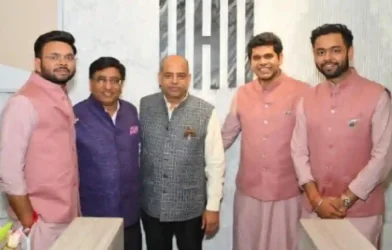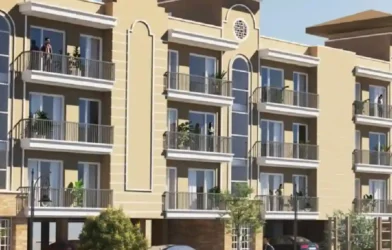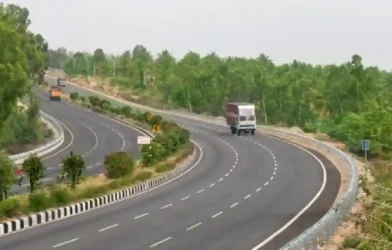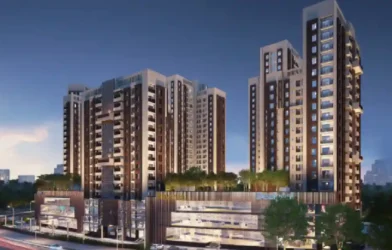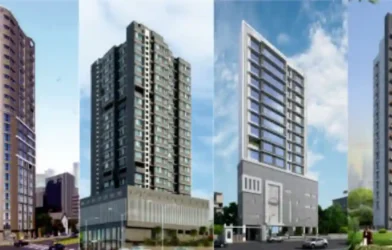Subtotal ₹0.00
TORBIT TAKE 5
Bengaluru-based Manasum Senior Living is known for creating intelligently designed and luxuriously equipped eco-friendly, safe, comfortable and cosy homes with an aim to bring colours of life to senior living. Anantharam Varayur, Co-Founder, of Manasum Senior Living talks about the Brand Manasum, the evolving senior living market with opportunities and challenges and the need to broaden this potential asset class with incentivized policies to support affordability and promote inclusiveness. Vinod Behl
What is the USP of Manasum senior living projects? How does your brand stand out in this competitive senior living market?
At Manasum Homes, our unique selling proposition lies in the holistic approach we take to senior living. We focus on creating vibrant, supportive communities that cater to the physical, mental, and social well-being of our residents. Our projects feature a wide range of amenities, including health and wellness centers with 24/7 nursing services, outdoor and indoor recreational facilities, and exclusive clubhouses that foster social interaction. Additionally, our commitment to quality is evident through rigorous staff training, low staff-to-resident ratios, and regular audits to ensure the highest standards of care. Our innovative partnerships with various reputed builders further enhance our offerings, setting us apart in the market. Based in Bangalore, India, we have quickly established ourselves as a leading name in the industry since the launch of our flagship project, Manasum Avighna, in 2020.
After the recent launch of Manasum Banyan in Bengaluru, what other senior living project launches are lined up in this financial year?
Following the successful launch of Manasum Banyan at Godrej Royale Woods in North Bangalore, we are excited to announce our latest project, IKIGAI Goa. This project has been met with enthusiasm and positive feedback from the community. Additionally, we have plans to develop 2500 units over the next two years, focusing on both luxury and assisted living segments. Our partnership with Prescon will bring innovative design and enhanced services to these future projects, continuing to set new benchmarks in the senior living industry.
How do you look at the present senior living market – both affordable and luxury, and the emerging concept of intergenerational homes? Going forward, what kind of opportunities and challenges do you foresee?
The senior living market is evolving rapidly, with growing demand for both affordable and luxury options. At Manasum Homes, we see immense potential in catering to diverse financial backgrounds while maintaining high standards of quality and care. The concept of intergenerational homes is also gaining traction, as families seek environments where multiple generations can coexist and support each other. Moving forward, we anticipate opportunities in expanding our offerings to include more intergenerational living options and continuing to innovate in both the affordable and luxury segments. Challenges may include overcoming regulatory environments and ensuring affordability without compromising on quality, but our commitment to excellence and strategic partnerships position us well to address these challenges.
How favourable are the policies to promote senior living, and what more needs to be done, particularly looking at the FY25 budget?
The focus on leveraging India’s ‘silver dividend’ in the 2024 budget is a positive initiative that highlights the potential work capacity of individuals aged 60-69. This recognition marks a significant shift in perceiving senior citizens as active contributors to the economy rather than passive dependents. This approach aligns perfectly with the evolving concept of senior living communities as vibrant, productive spaces rather than mere retirement homes.
The sector anticipates a surge in demand for ‘smart’ senior living facilities equipped with home offices, high-speed internet, and collaborative spaces to support continued professional engagement. The budget’s emphasis on skilling and reskilling is another promising aspect. Programmes specifically designed for seniors could open up new avenues for lifelong learning within senior living communities.
Additionally, the focus on healthcare infrastructure development is a major positive for the sector. Improved medical facilities near senior living communities will enhance the overall quality of life for residents. The recognition of the ‘silver economy’ by the government could lead to tax incentives or subsidies for developing and operating senior living facilities, making them more accessible to a broader segment of the aging population.
However, more can be done to further promote senior living. There should be more targeted measures such as additional financial incentives for developers and residents, grants for building affordable senior housing, and subsidies for healthcare services within these communities. These steps would significantly boost the sector and ensure that quality senior living options are available to a wider range of income groups.
How appealing is the alternate real estate asset class of senior living to the investors?
India’s senior living sector is set for substantial growth, driven by a significant demographic shift and changing family structures. According to the NSO’s “Elderly in India 2021” report, the population of senior citizens (aged 60 and above) is projected to grow from 138 million in 2021 to 194 million by 2031, a 41 percent increase. The market, currently valued at $2-3 billion, is expected to reach approximately $12 billion by 2030, according to Colliers. Factors such as the decline of the joint family system, increasing life expectancy, and evolving lifestyle preferences among seniors are contributing to this growth. Modern senior living communities offer independent living facilities, assisted living centers, and continuing care retirement communities, emphasizing security, medical care, and holistic well-being through various wellness programmes.
The demand for senior living facilities is rising not only in metropolitan areas but also in tier II cities and spiritually focused locations like Vrindavan and Rameswaram. Currently, about 60 percent of the demand comes from tier II cities. Enhanced policy support and investment from institutional investors are significantly boosting the market. Government schemes like Atal Vayo Abhyuday Yojana (AVYAY) and state guidelines offering tax-based incentives and relaxed development charges are encouraging the development of senior living projects. As the industry evolves, there is potential for expansion into low- and mid-income segments, innovative financing schemes, and integration within larger township projects, providing India’s growing elderly population with comfortable, secure, and fulfilling living environments.








